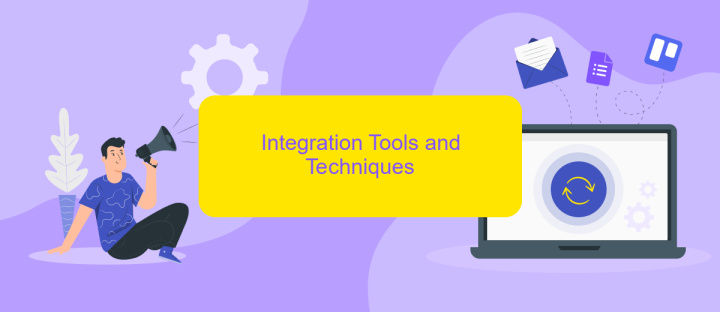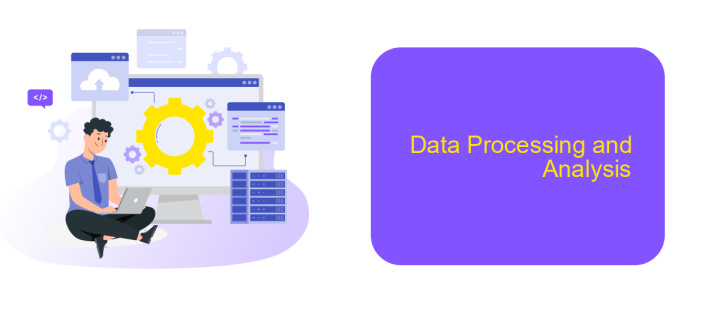Data Acquisition Integration
Data acquisition integration is a critical process in modern data management, enabling seamless collection, processing, and analysis of data from diverse sources. By integrating various data acquisition systems, organizations can ensure real-time data accessibility, improve decision-making, and enhance operational efficiency. This article explores the key aspects, benefits, and challenges of data acquisition integration, providing insights into its pivotal role in today’s data-driven landscape.
Introduction
Data acquisition integration is a critical component in modern data-driven enterprises, enabling seamless data flow and enhancing decision-making processes. By integrating various data sources, businesses can achieve a comprehensive view of their operations, leading to improved efficiency and strategic insights.
- Streamlined data collection from multiple sources
- Enhanced data accuracy and consistency
- Real-time data access and analysis
- Improved decision-making capabilities
- Reduced manual data handling and associated errors
One of the tools that facilitate efficient data acquisition integration is ApiX-Drive. This service allows businesses to connect various applications and automate data workflows without requiring extensive technical knowledge. By leveraging ApiX-Drive, organizations can ensure that their data integration processes are both efficient and scalable, ultimately supporting better business outcomes.
Data Acquisition Methods

Data acquisition methods encompass various techniques to collect and integrate data from multiple sources. These methods include manual data entry, sensors, web scraping, and APIs. Manual data entry involves human input, which can be time-consuming and prone to errors. Sensors are used to automatically capture data from physical environments, making them ideal for IoT applications. Web scraping extracts data from websites, but it requires careful handling to avoid legal issues. APIs provide a structured way to access and integrate data from different platforms, ensuring consistency and reliability.
Integrating data acquisition methods can be streamlined using specialized services like ApiX-Drive. ApiX-Drive simplifies the process of connecting various data sources, allowing seamless data flow between applications. This service supports a wide range of integrations, enabling businesses to automate data collection and reduce manual intervention. By leveraging ApiX-Drive, organizations can enhance data accuracy, improve efficiency, and make more informed decisions based on real-time data.
Integration Tools and Techniques

Integration tools and techniques are essential for seamless data acquisition. These tools help in connecting various data sources, ensuring that data flows smoothly between systems. They also play a crucial role in data transformation, validation, and storage, making the entire process efficient and reliable.
- APIs: Application Programming Interfaces (APIs) enable different software applications to communicate with each other, facilitating data exchange.
- ETL Tools: Extract, Transform, Load (ETL) tools automate the process of extracting data from multiple sources, transforming it into a usable format, and loading it into a destination system.
- Middleware: Middleware acts as a bridge between different applications and databases, ensuring smooth data flow and integration.
- Integration Platforms: Services like ApiX-Drive offer user-friendly interfaces to set up and manage integrations without extensive coding knowledge.
Choosing the right integration tools and techniques depends on the specific needs of your organization. For instance, ApiX-Drive simplifies the integration process by providing pre-built connectors and an intuitive interface, making it easier to connect various data sources and automate workflows. This ensures that data is consistently accurate and up-to-date across all systems.
Data Processing and Analysis

Data processing and analysis are crucial steps in transforming raw data into meaningful insights. Once data is acquired, it must undergo a series of procedures to ensure its quality and relevance. This involves cleaning the data to remove any inconsistencies or errors, and then transforming it into a format suitable for analysis.
Effective data processing involves several key stages. First, data cleaning is performed to handle missing values, outliers, and duplicates. Next, data transformation is carried out to convert the data into a usable format. Finally, data integration combines data from various sources to provide a comprehensive dataset for analysis.
- Data Cleaning: Removing errors and inconsistencies
- Data Transformation: Converting data into a usable format
- Data Integration: Combining data from multiple sources
For seamless data integration, services like ApiX-Drive can be utilized. ApiX-Drive automates the process of connecting different data sources, ensuring that data is merged accurately and efficiently. This enables organizations to focus on analyzing the data rather than spending time on manual integration tasks.
- Automate the work of an online store or landing
- Empower through integration
- Don't spend money on programmers and integrators
- Save time by automating routine tasks
Conclusion
In conclusion, effective data acquisition integration is pivotal for optimizing business operations and enhancing decision-making processes. By seamlessly connecting various data sources, organizations can ensure that accurate and real-time information is available across different platforms. This integration not only reduces the risk of data silos but also improves data accessibility, leading to more informed and timely decisions.
Utilizing tools like ApiX-Drive can significantly streamline the integration process, offering a user-friendly interface and robust features that cater to diverse business needs. ApiX-Drive simplifies the connection between multiple applications, automating data transfer and ensuring consistency. This ultimately saves time and resources while maintaining data integrity. As businesses continue to evolve, leveraging advanced integration solutions will be essential for staying competitive and achieving long-term success.
FAQ
What is Data Acquisition Integration?
Why is Data Acquisition Integration important?
How can I automate Data Acquisition Integration?
What challenges might I face with Data Acquisition Integration?
Can I integrate data from different types of sources?
Do you want to achieve your goals in business, career and life faster and better? Do it with ApiX-Drive – a tool that will remove a significant part of the routine from workflows and free up additional time to achieve your goals. Test the capabilities of Apix-Drive for free – see for yourself the effectiveness of the tool.


